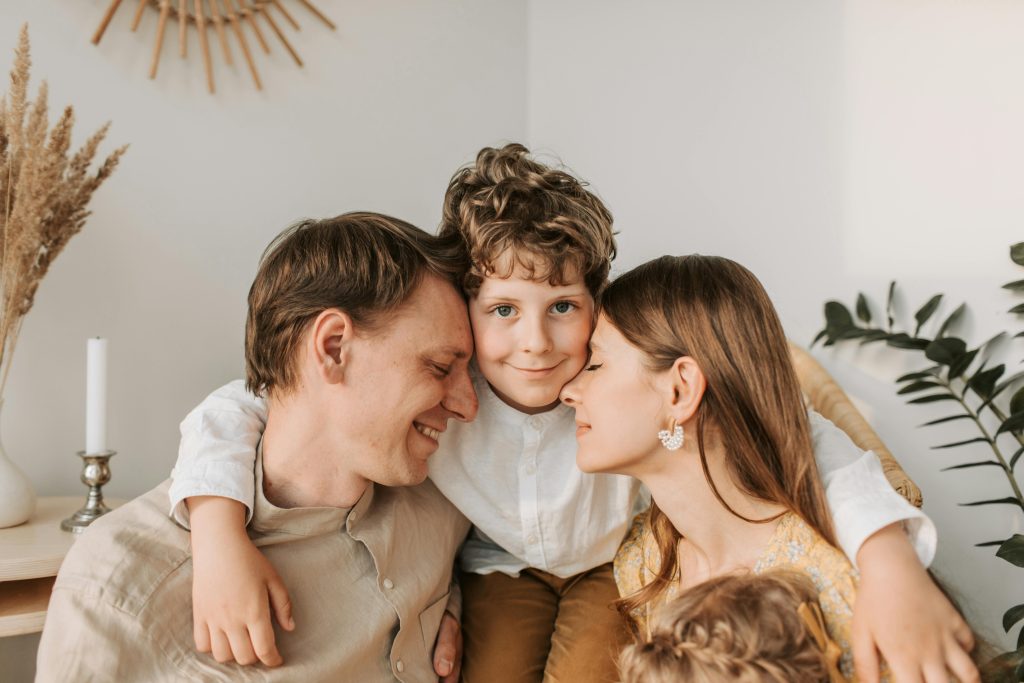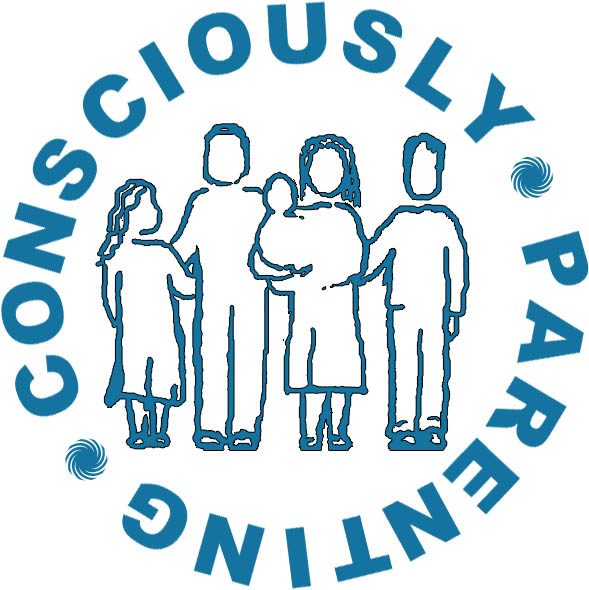How Changing Your Relationship Story Helps You

When a Relationship isn’t Working
If an important relationship is feeling chaotic or disconnected, whether you’re struggling to parent a particular child, you’re in a parenting rough patch, or the strained relationship is with a partner, your parent, or another family member, you probably just want things to go back to peace, joy, ease, and fun. Or perhaps to experience it for the first time. We need to change the story we are telling of what’s happening, to see something we couldn’t see before, in order to shift the relationship. What we see in our present day relationships, especially when something isn’t working, often misses some important elements of what is happening. And when we don’t know what to change, we feel stuck.
Most of us experienced times of chaos when we were growing up and those were likely met with punishments to make behaviors stop. (Whether the behaviors actually stopped or not is another story.) We tend to resort to those kinds of strategies when we’re experiencing relationship stress, even if they seem to make things worse. In the name of connection, I’d like to offer another way to move out of these difficult situations without threats, consequences, or trying to control another person by looking at the story we have about the relationship and how we can change that.
Now, before I go any further, I’m not talking about pretending something bad didn’t or isn’t happening. That doesn’t change anything. This isn’t positive psychology, shoving something under the rug, or bypassing. You are probably already well-versed at those strategies. I’m also not saying that all relationships can heal together, though with two willing people they have a much better chance.
Different Approach, Different Solutions
This is about using the ARCH of Healing to help you create a new opening to see what else may be happening that you haven’t been able to see yet and take appropriate action for the situation.
Albert Einstein said that no problem can be solved from the same consciousness that created it. What that means is that in order to effectively solve a problem, you need to change your perspective and approach it from a different mindset than the one that originally caused or contributed to the issue.
 The ARCH of Healing from my newest book, It’s Never too Late to Heal: Transforming the Relationship Stories of Our Lives, can help you to discover the story you haven’t been able to see yet and open up new solutions for the challenges at hand.
The ARCH of Healing from my newest book, It’s Never too Late to Heal: Transforming the Relationship Stories of Our Lives, can help you to discover the story you haven’t been able to see yet and open up new solutions for the challenges at hand.
The ARCH of Healing is composed of the following steps: Acknowledge, Resource/Regulate, Connect the Dots/Complete the Stress Cycles, and Heal. We’ll explore each one together one at a time with a real situation based on a client session last week with a couple regarding their 12-year old son.
Before we begin, take a moment and connect with a relationship you have right now that is feeling chaotic or disconnected. As you read through each step, see if you can apply the information to your own situation.
Acknowledge

The first thing that needs to happen is to acknowledge what is happening and to allow yourself to feel what this experience is like for you right now. One way to begin to acknowledge is by writing down the thoughts, the feelings, and anything you notice in your body when you think about the relationship that isn’t working well right now. Jot it down or write complete sentences, draw pictures, or speak it out loud to yourself or someone else who can just listen. There’s no right or wrong here.
Kristine and Jim’s Story
Kristine and her husband Jim came to see me because their home was anything but peaceful. Jim and their 12-year-old son were repeatedly in power struggles and Kristine repeatedly found herself in the middle trying to keep the peace. They weren’t enjoying parenting or life with all the power struggles happening. They knew that 12 could be a bumpy age, but the tension in the whole family was just too much.
Jim just wanted their son to do what he needed to do around the house and for his homework, not need to be told 100 times, and not wait until the last minute. He found himself micromanaging him, which just increased the tension and didn’t seem to help his son become more independent.
As this was a parent session, I made room for each of them to share what they were feeling. Kristine talked about the stress she was feeling trying to make sure Jim and their 12-year-old weren’t fighting. Jim expressed his frustration and anger about what he was seeing as an irresponsible child. When they checked in with their bodies, Kristine felt tension in her heart and shoulders and Jim was holding tension in his stomach. I encouraged them to find ways to move and express what they were feeling in their bodies through sounds (UGHHHHH!) and physically moving their bodies.
Now it’s your turn.
Take a moment and think of a relationship challenge you have right now. What is happening? What is the story you’re telling to make sense of what you’re seeing? What can you do to name what is happening without the story? Find a way to express some of the feelings. Share it with a good friend who can listen without trying to fix it for you. This is where Healing Story Circles can be helpful because it’s a group of people who are committed to listening to what this experience is like for you so you can get unstuck. Is there anything that needs to move? Do you need to clench your fists and yell? Cry? Now is a good time for that.
Resource/Regulate

After you acknowledge what is happening- your thoughts, feelings, and body sensations, and express whatever is there for you about it (what it’s like for you)- then we’re ready to shift into the R to resource and regulate.
When you’re having a hard time, having a lot of conflicting thoughts, you’re feeling big emotions, or are just generally unsettled, you need to find a way to resource and regulate yourself. Resourcing is connecting with something or someone that helps you feel you’re not alone. Regulating is supporting your nervous system to respond to the current situation with an appropriate measure for the situation. Regulation isn’t only about calming down but sometimes might be about becoming more active when the situation requires it.
When you’re dysregulated, the story you’re going to tell yourself about what’s happening will always skew negative. So regulating is essential to shifting the story so you can see something new.
For Kristine and Jim, resourcing looked like connecting with each other through eye contact, holding hands, and laughing together, which happened spontaneously in the session. For them, regulating looked like going to the gym together, spending time together having fun, and enjoying nature in the place they live. They had just gone to the gym together that morning and even thinking about that was a resource for them. There were several times in the session that we stopped to take a deep breath and they put their hands on their heart and belly to resource themselves.
Some people regulate through a kickboxing class, listening to music and singing, being held by someone, making art, or sitting on the grass underneath a big, beautiful tree.
Ask yourself: “What do I need right now that feels doable?”
Connect the Dots/Complete Stress Cycles
By now you’ve acknowledged what is happening for you (your thoughts, feelings, and what’s happening in your body), and you’ve found some ways to resource and regulate yourself, so now we’re ready for C.
Connect the Dots

One of my favorite questions for connecting the dots is, “When have I felt like this before?” or “When was the first time you felt those feelings or sensations?” I don’t mean when were you in this situation before, but when did you have the same feelings, body sensations, or thoughts?
For Kristine and Jim, it wasn’t about the last time the 12-year-old had made them feel like this, but rather when have they felt this way (power struggle, the tension in their shoulders, heart, and stomach).
When you have a child, another great question is asking yourself what was happening for you at this age and how you were parented. Was it what you needed? Are there any similarities between what happened then and how you’re feeling now? (Hint: it may have been how your parents may have been feeling rather than how you were feeling.)
It isn’t a cognitive exercise, but rather an opportunity to feel your body and be curious about the memory or memories that come up for you.
When you make a connection to an earlier time, you can start to see what happened in the past and differentiate what is happening now. What did you need then? What does the current situation need? They may not be the same thing.
For both Kristine and Jim, when they reflected on their experience of being parented at 12, they could clearly see that neither of them had gotten what they really needed. Kristine needed someone to be curious about her and what was happening for her, rather than to just dole out punishments. Jim was treated very harshly by his parents. They were both trying to do something different than was done to them, but they weren’t sure how to do it now.
Now Shifting Back to You
Is there anything you need to do to complete that past situation now? When I work with my clients and students, we focus on completing something that wasn’t finished back then in our body/mind in present time. It could look like running away or moving your arms to defend yourself. The memories are in the body, and we need to make space for those. But no one ever taught me how to do that or even that it was important. I’m guessing that’s probably true for you, too.
Connecting the Dots is great when you can connect with a specific memory. But we can’t always do that. Or we may need some support to do it. That’s where completing the stress cycles comes in!
Completing the Stress Cycles

The best thing about completing stress cycles is that you don’t have to know what happened. This is about releasing the stress that is stuck in your body so that you can move forward without whatever you’ve been holding onto in your cells. In essence, it might look like a long hug, a belly laugh, or focusing on your breathing.
You don’t have to focus on a particular situation or make a deep connection or relive something painful. It doesn’t even need to be serious. This is about getting the stress out of your body so that you can think and see a new solution. If you’re familiar with my work, this helps you to get out of red light (survival brain) and back into green light (thinking brain), and maybe even be able to see how you can move back into deep connection in yellow (emotional brain).
If you want to learn more, Brené Brown has a great podcast about this called Burnout and how to complete the stress cycle with Amelia and Emily Nagoski, who wrote the book, Burnout.
What works for you?
What do you already do that is healthy to release stress from your body? What would you like to try? What makes you laugh really hard? Who can you ask for a hug?
Heal

So now we’re to the part we’ve all been waiting for. How do we heal here? What do you want to have happen?
When Kristine and Jim went through the steps above (acknowledge, resource/regulate, connect the dots/complete the stress cycles), I could see that they were making their own connections about what had been happening and what might be needed for everyone.
They were able to see that more positive connection was needed with their son. Most of their interactions were telling him what to do or being upset that he hadn’t done something. They also decided that it was too much for Jim to be the primary disciplinarian with their son right now because he was so triggered by their son’s behaviors. Jim was going to focus on connecting rather than telling him what to do so he could get out of the pattern of micromanaging him.
Kristine said she would take that on the main parenting role of tracking and support for their son for now as long as Jim was willing to work on connecting. In the meantime, Jim knew he needed to be heard more and have spaces to share about his own experiences as a pre-teen before he would really be able to listen to his son’s experiences. He scheduled another session and was considering joining a Healing Story Circle or SOAR School, since we’re exploring It’s Never too Late to Heal starting in January.
Your Next Steps in Healing
Now is a great time to come back to your own situation. What can you see now that you couldn’t see before? What can you try to do to shift what’s happening back to connection, first by connecting to yourself, then with a solution that respects everyone’s needs?
Do you see a step that you can take in your own relationship challenge that you couldn’t see before?
I’ll be sharing more examples and applications of the ARCH of Healing and I’d love to hear your relationship challenges so that I can help you discover new ways to move out of these difficult situations without threats, consequences, or trying to control another person, by looking at the story we have about the relationship and how we can change that. You can write in the comments or message rebecca @ consciouslyparenting (dot) com (without the spaces) and I’ll include your question in upcoming blog posts.
I want to encourage you to check out my latest book, It’s Never too Late to Heal, which is available now for pre-orders. Please share with someone you know! It’s a great layer of support!
You can also check out S.O.A.R. School where we’ll make space for you to explore your own relationship stories in a small group container. Starts January 2025 for our next live round.




